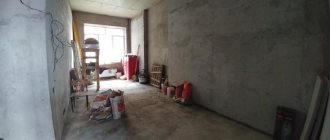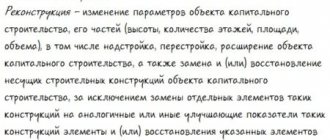What is BTI
The Bureau of Technical Inventory is a special state system whose main purpose is to conduct technical accounting of real estate.
The system carries out a rapid exchange of information between all organizations that carry out an inventory of objects, including land plots and structures, as well as those conducting cadastral records.
The work of the structure is regulated by law.
The bureau plays an important role in housing redevelopment. If changes were made without the consent of the BTI, this is considered illegal. In the event of the destruction of a load-bearing wall, for example, the consequences can be very dire.
The structure in its activities is guided by a number of regulations, the most important of which is Government Decree No. 921 of December 4, 2000.
Some part of the organization's activities is regulated directly by the organization itself. For example, the Bureau has the right to independently set prices for the provision of certificates on objects .
Structure
In the course of its work, BTI closely cooperates with many systems - Rosreestr authorities, housing and communal services organizations, banking institutions. The structure of the Bureau is ambiguous; sometimes it is very difficult to understand to whom the BTI reports, and different bodies may be hidden under the same name.
In most cases, the bureau does not have government financial support and is self-sufficient. The number of staff is also ambiguous. For example, in small towns, an organization may only employ about 5 people.
Sometimes BTI is registered as a branch of a state or federal enterprise.
Bureau of Technical Inventory
| This article is proposed for deletion. An explanation of the reasons and the corresponding discussion can be found on the Wikipedia page: Towards deletion / May 6, 2021. While the discussion process is not completed, you can try to improve the article, but you should refrain from renaming or unmotivated removal of content, for more details, see the guide to further action. Do not remove the mark for deletion until the end of the discussion. Last modified by Bukwoegka (contribution, journals) at 09:03, 30 May 2021 (UTC; about 7 hours ago). Administrators: , history, logs, delete. |
The "BTI" request is redirected here; see also other meanings.
Bureau of Technical Inventory (BTI) is an organization that carries out state technical accounting and technical inventory of real estate in Russia, Belarus, Kazakhstan and Ukraine.
BTIs operate in Russia in the form of state unitary enterprises, municipal unitary enterprises, state budgetary institutions, and joint-stock companies. Today, there are about 200 technical inventory organizations (TII) operating in Russia.
Field of activity
Surely each of us at least once in our lives asked ourselves the question: “What does BTI do?” or “What does BTI do?” The scope of activity of this organization is diverse.
Bureau employees evaluate real estate structures, keep records of them, deal with document flow and preparation of certificates, regulations, and technical specifications.
How the BTI structure ensures the direct functioning of the state registration system , collects and analyzes statistical data.
In addition, it creates a tax base, which subsequently serves as the basis for the collection of taxes by the Federal Tax Service.
The Bureau creates records of unfinished construction projects, land plots, residential and non-residential premises. The database includes information about the location of the premises, its technical condition and its price. Structure archives are a systematic collection of information about all buildings - garages, garden houses, large factories.
Important! Several years ago, the organization was engaged in registering property rights. But now this function falls under the competence of Rosreestr.
Story
In 1918, real estate accounting was transferred to the NKVD of the RSFSR, where a department of local (later communal) economy was created, and in 1921 - the Main Directorate of Public Utilities (GUKH) of the NKVD.
The resolution of the Economic Conference of the RSFSR “On approval of the Regulations on the inventory of property of local councils” on May 21, 1927 (SU, 1927, No. 55, p. 379) provided for the conduct of state accounting according to a unified methodology by all technical inventory organizations united into a single system. The inventory of property should have ensured the identification of its ownership, a description of the main features, determination of the technical condition and assessment.
In 1930, the functions of the GUKH NKVD of the RSFSR, in whose system technical inventory organizations operated, were transferred to the Main Directorate of Public Utilities created under the Council of People's Commissars of the RSFSR. Since 1931, these functions were transferred to the created People's Commissariat of Public Utilities of the RSFSR, which was transformed in 1946 into the corresponding Ministry. Being in the housing and communal services system until the beginning of the 90s, BTI took the housing stock and local economic facilities of the country under permanent technical registration.
By order of the Ministry of Housing and Utilities of the RSFSR dated October 2, 1975, technical inventory organizations, having the rights of a legal entity, were transferred to self-accounting and operated in accordance with the Regulations on a socialist state production enterprise, taking into account the features approved by Resolution of the Council of Ministers of the RSFSR dated January 22, 1968 No. 38.
According to the Decree of the Council of Ministers of the USSR dated February 10, 1985 No. 136 “On the procedure for state accounting of the housing stock,” BTI carried out registration and technical inventory of the housing stock in cities, urban-type settlements and rural areas, regardless of its affiliation, and also submitted them to government bodies Central Statistical Office of the USSR relevant statistical reporting, guided by the Instructions on the procedure for conducting a technical inventory of the housing stock, approved by order of the Central Statistical Office of the USSR dated July 15, 1985.
In the 90s of the 20th century, the breakdown of the public-state system, the liquidation of the Ministry of Housing and Communal Services of the RSFSR, the executive committees of the Soviets of People's Deputies and their local housing and communal authorities led to the destruction of the state system of technical inventory of the housing stock, carried out by the BTI.
Currently, the system of unified state technical accounting and technical inventory of urban planning objects has been restored and is developing.
Functions and powers of the BTI
The main function is to examine the technical condition of premises, both residential and non-residential.
The system performs inventory in three directions:
- When the facility is just being put into operation.
- Unscheduled inventory when it is necessary to legitimize changes in transactions and other operations.
- When demolishing a house or reconstructing it.
After checking the BTI, a technical passport for the object is drawn up , which contains information about the initial cost estimate, the address of the object, and its wear and tear. In other words, the passport contains detailed characteristics.
Also required is an appendix to the passport - a floor plan and an explanation - a brief diagram-schedule.
Other functions include monitoring the condition of objects, inventory of housing stock and revaluation of buildings.
The Bureau also advises citizens and provides them with the necessary information.
In addition to the above, the results of the organization’s activities are necessary for the formation of the State Register of Real Estate. Based on the information, an archive is created in which important documents are stored - registration books, inventory files, technical passports, schedules and plans.
Types of technical inventory
The technical inventory of capital construction projects is divided into primary technical inventory and technical inventory of changes in the characteristics of a capital construction project.
The primary technical inventory of capital construction projects consists of:
- in identifying their presence and location on the land plot;
- in the description according to the main features;
- in establishing internal and external dimensions of areas and volumes;
- in determining economic characteristics, including inventory value;
- in identifying possible contradictions between technical documents and the actual state of objects.
BTI carries out a primary technical inventory of the entire building as a whole, taking into account all located premises. Based on the results, a technical passport for the building, floor plans and explications for all premises are drawn up.
A technical inventory of changes in the characteristics of a capital construction project is carried out in the event of a change in the technical or qualitative characteristics of a capital construction project (redevelopment, reconstruction, refurbishment, refurbishment, destruction, demolition). Based on the results of the technical inventory of changes in the characteristics of the premises, the technical characteristics of the entire building are recalculated, changes are made to the technical passport for the building, to the floor plan (on which the premises are located) and to the explication.
What services does BTI provide to the population?
The bureau provides citizens with information on issuing certificates and technical passports, services for inspecting real estate, assessing the condition and assessing the value. It also registers capital construction projects, issues technical reports, and archives data.
Important! The cost of services depends on the region where the Bureau is located.
Citizens can obtain information about real estate - address plan of the territory, cadastral and technical passports, site plan and more. For an additional fee, documents will be prepared urgently.
The Bureau also issues certificates and extracts containing data about the object. They are provided upon application by the person. The application is submitted directly to the Bureau or on the government services website. Please check the received data carefully, as errors are possible - the address is indicated incorrectly or the graph is drawn.
Objects of technical inventory of real estate
The objects subject to reconciliation are accounting units that have autonomous characteristics and independent legal status in the form of a name, which determines the admissibility of their inclusion in the inventory.
The main criterion determining the legal status of a property eligible for the designated procedure is considered:
- technical passport of the building;
- technical plan with explication;
- cadastral number.
Other situations provide for the definition of an accounting unit or object to include several buildings that make up a single complex.
The complexes that make up the accounting unit are included in the list, and the set of premises that organize its structure are counted as auxiliary characteristics of the object.
If a complex structure needs to be divided into two or three units, accompanying documentation is drawn up, and a dividing line is drawn between the buildings in the form of a fence or a blank wall that does not allow direct communication. Conditional divisions are not allowed.
The same applies to households and other capital buildings located on a plot of land. They are determined by the accounting unit collectively, without dividing the property value of the land and the structure erected on it. The building is included in the list of objects, and the site is designated as its characteristic.
Elements of a building or premises located in them do not form inventory objects. The same applies to buildings that do not meet the criteria for capital structures. Primarily, they are considered as characteristics of the main structure, being added to it comprehensively and forming an accounting unit along with it.
Newly erected buildings are subject to an inventory after they are put into operation and handed over with an inspection report. In addition, they are provided with technical documentation.
Providing documentation requires a preliminary inventory, the information of which is entered into the register, which distinguishes the real estate as a property unit.
In addition to those indicated, the following are considered to be specific objects:
- Construction in progress;
- unauthorized construction, non-legalized buildings (see Recognition of ownership of unauthorized construction);
- abandoned buildings and structures.
Linear and linear-cable structures are also distinguished, in accounting for which it is necessary to observe the nuances of defining units and the rules for including them in the inventory.
Help in “utility” disputes
We still have communal apartments, with their specific disputes.
For example, a person inherited a room from his grandmother in such a quarrelsome apartment, and his new neighbors tell him that the old woman dismantled her built-in closet, after which she moved its wall into the corridor, thus taking over the common area.
They insist: bring the wall back! Do we need to rush to fulfill the demands of our neighbors? No. First you need to make a request to the BTI, which will resolve this dispute. The Bureau specialist checks whether the current layout matches the original one and issues his verdict.
In addition to technical information about the time of construction of the object, the material from which it was built, archives about the redevelopment of premises, the BTI keeps records of arrests, encumbrances and easements of houses and apartments.
Decoding abbreviation
BTI stands for Bureau of Technical Inventory. It is a state enterprise in the field of accounting and technical assessment of capital construction projects.
Previously, this institution carried out all activities with real estate, prepared technical documentation and registered property rights.
Currently, the registration of rights to real estate and the issuance of documents containing information about the property and information about registered rights and encumbrances on it are carried out by Rosreestr.
The Bureau of Technical Inventory is engaged in state accounting and inventory of real estate objects, and reflection of their technical condition.
Required documents
To complete any real estate transaction, you must contact the BTI.
This government organization obtains the following documents:
Technical certificate
Of course, most often the bureau is asked to issue a technical passport for premises. This document is required for any real estate transactions.
A technical passport is a document containing all the basic data about the parameters of a property.
The technical passport contains the following information:
Also, the technical passport contains the following data:
The issuance of a technical passport for an object means that, from a legal point of view, it complies with all legal requirements, unauthorized redevelopment has not been established, and various transactions can be made with this object.
Extract
An extract from the Technical Inventory Bureau may be required for various reasons.
The most common reason for ordering a BTI extract is to confirm ownership of the premises before selling it to the buyer.
With the help of an extract, the legal purity of the residential premises being sold is confirmed. To receive an extract, you need to order it at the BTI department.
You should know that the bureau can obtain information about registered rights to real estate only until January 1, 1998.
Information about rights to real estate objects, registration of rights for which was issued after the specified date, is carried out only in the Rosreestr service.
The extract contains information about the apartment and the owner.
This:
Information about the owner, which is indicated in the extract:
- Full Name.
- Series, passport number and who issued it.
- Place of registration.
- Share in ownership.
To obtain an extract, you must submit an application to the office at the location of the facility.
Each territorial branch of the BTI is responsible for a specific territory. To obtain an extract, you must pay a state fee.
Technical plan
Technical plan is a document required for cadastral work. It indicates the most important parameters of the property.
It is important to remember that the technical passport for the premises and the technical plan for the building are different documents.
First, a technical plan for a capital construction project is prepared, and then, based on it, a technical passport.
The text part contains:
The technical plan contains a floor plan and an explication of the premises indicating their area and height.
BTI is a government organization that performs important functions that make it possible to formalize real estate transactions.
Video: BTI technical passport
(No Ratings Yet)
Carrying out technical inventory
The designated types of work are operative in nature. After planning at the federal and municipal levels, an authorized commission is formed, with the involvement of responsible executors.
The customers of the state inventory are the authorities. Reconciliation of data on federally and municipally owned real estate is carried out under the supervision of the municipalities on whose territory the buildings are located.
During the initial registration of an erected structure, the customers are citizens - owners of real estate or organizations (enterprises) in charge of the buildings. This process is defined as certification.
Subsequently, this category of persons initiates reconciliation in property transactions by contacting the BTI. Upon application, an inspection of the object acting as an inventory unit is carried out.
During an inspection based on a state order, buildings and structures previously included in the list are identified and they are walked around, recording on paper the characteristics inherent in the building. This list is drawn up in the form of a commission act and requires subsequent reconciliation with a previously drawn up act.
The information included in the acts drawn up during the previous inventory must correspond to the newly generated information. If there are discrepancies as a result of reconciliation, they are written out for examination by an expert commission and entered into the information data bank.
Changes based on the information received allow for a decrease or increase in the inventory and cadastral value of structures or lands, which regulates the transfer of such information to the Federal Tax Service in order to change the taxation of citizens (see Challenging the cadastral value).
Each check is carried out in two stages:
- Work on the ground, including walking around the territory, surveying the building and topographic survey.
- Office work consisting of transferring received information to paper and electronic media.
The information received is transmitted:
- to the State Statistics Committee of the Russian Federation;
- Gosstroy and Ministry of Land Construction of the Russian Federation.
Completion of the process is accompanied by the preparation of a report submitted to the municipal authorities.
Types of technical inventory
The reconciliation procedure is carried out during technical testing, based on the type of activity that acts as:
- primary;
- planned;
- unscheduled technical testing.
Primary inventory is determined by registering real estate, drawing up a technical plan and passport. In addition, the location of the building is established and its ownership by an individual or legal entity and the type of legal ownership are determined.
Planned work is carried out at least once every five years and no more often than every three years. They are authorized by federal or regional regulations of the relevant government authority. They are carried out in an area of residential buildings or industrial premises, covering the cadastral quarter.
Unscheduled work allows for unregulated implementation. It is initiated by the owner of the property on a reimbursable basis by submitting an application to the BTI authority. Such cases involve carrying out the declared work on demand, urgently, regardless of the type of property.
They are mainly carried out during property transactions or during the reconstruction of houses. In case of authorized refurbishment of premises or registration of unauthorized construction, a permit issued by the administrative commission is attached to the application.











